Ancient Near East
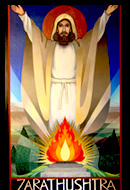 Our Zoroastrian Moment
Our Zoroastrian MomentMonday, May 7, 2012 by Shai Secunda | Jewish Ideas Daily » Daily Features
The great contemporary scholar of religion Jonathan Z. Smith once remarked that the omnipresent substructure of human thought lies in the human capacity to make comparisons. In ancient Sumer, scribes crafted intricate similes.
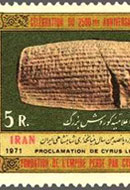 Cyrus, Ahmadinejad, and the Politics of Purim
Cyrus, Ahmadinejad, and the Politics of PurimWednesday, March 7, 2012 by Alex Joffe | Jewish Ideas Daily » Daily Features
At this week's pre-Purim meeting in Washington between President Obama and Prime Minister Netanyahu to discuss Iran's nuclear threat to Israel, Netanyahu gave Obama a present: the book (or m'gilah, scroll) of Esther, which tells how the Jewish heroine foiled Haman's plot to kill the Jews of ancient Persia.
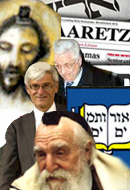 Highlights of 2011:
Highlights of 2011:Part II
Friday, December 30, 2011 | Jewish Ideas Daily » Daily Features
Part II of our round-up of the past year's most popular features on Jewish Ideas Daily. (Part I is here.)
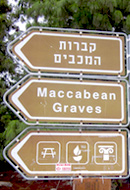 Urban Planning, Hasmonean-Style
Urban Planning, Hasmonean-StyleWednesday, December 28, 2011 by Elli Fischer | Jewish Ideas Daily » Daily Features
In the early 1990s, construction began on Modi'in, Israel's new "City of the Future." Designed by renowned architect Moshe Safdie and located mid-way between Jerusalem and Tel Aviv, Modi'in is in many ways typical of modern planned communities.
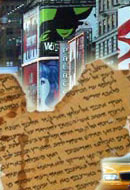 The Dead Sea Scrolls, Alive in Times Square
The Dead Sea Scrolls, Alive in Times SquareTuesday, November 8, 2011 by Alex Joffe | Jewish Ideas Daily » Daily Features
In the basement of a converted theater on West 44th Street, tucked between the legendary Sardi's restaurant and a bowling alley, a block from Times Square and across the street from the musical Memphis, is Discovery Times Square.
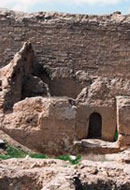 Diversity at Dura-Europos
Diversity at Dura-EuroposWednesday, October 12, 2011 by Alex Joffe | Jewish Ideas Daily » Daily Features
A new exhibit at New York University's Institute for the Study of the Ancient World brings to life the ancient city of Dura-Europos, which stands high above the Euphrates River on the eastern border of modern Syria, a monument to vanished eras.
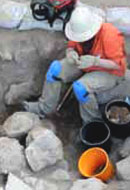 The New Biblical Archeology
The New Biblical ArcheologyMonday, July 25, 2011 by Alex Joffe | Jewish Ideas Daily » Daily Features
Every summer, the Israel Antiquities Authority holds a reception for foreign archeological teams excavating in Israel. This year's reception was attended by over 200 archeologists, who are investigating sites ranging in age from the Paleolithic through Islamic periods.
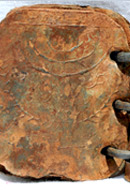 On Faith and Forgeries
On Faith and ForgeriesWednesday, May 4, 2011 by Alex Joffe | Jewish Ideas Daily » Daily Features
Remnants of the biblical world continue to surface like uncharted reefs along the shore, looming up and weirdly fascinating our nominally secular minds. One such set of objects, recently emerged, is a series of lead plates that appear to be embossed with writings and images and bound into books or "codices." What are they, how have they been received, and what does their reception tell us about our willingness to believe?
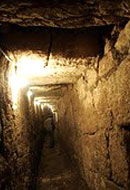 The Archeology War
The Archeology WarThursday, March 31, 2011 by Alex Joffe | Jewish Ideas Daily » Daily Features
The Islamic Educational, Scientific, and Cultural Organization (ISESCO) was founded in 1979 by the Organization of the Islamic Conference (OIC). It has three basic goals. The first is to spread a Saudi version of Koranic education throughout the Islamic world. The second is to publicize Islam to the non-Islamic world. The third goal is to oppose the "Judaization of Al-Quds"—i.e., Jerusalem.
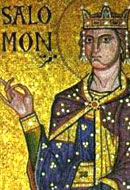 Seeking Solomon
Seeking SolomonTuesday, March 29, 2011 by Eve Levavi Feinstein | Jewish Ideas Daily » Daily Features
For traditionalists, the biography of King Solomon is enshrined in the Bible, in the narrative accounts in the books of Kings and Chronicles. The son of King David, who spent his career battling Israel's enemies, Solomon is depicted as ushering in an era of peace and prosperity. Yet the Bible also relates that Solomon took numerous foreign wives and concubines—one thousand in total—who led him to worship foreign gods and build shrines for their service.
Editors' Picks
Still Blaming the Jews Richard Wolin, Chronicle of Higher Education. German Egyptologist Jan Assmann claims that Judaism disrupted the ancient Middle East by inventing "religious exclusivity"—and calls his theory "a historical analysis of anti-Semitism."
Tomb Raiders Matti Friedman, Times of Israel. With its tunnels dating from the Jewish revolts against Rome, the area around Modi'in has become a magnet for archeologists—not to mention looters searching for buried treasure.
The Birth of Monarchy Bible History Daily. New research on the Qeiyafa Ostracon, the inscription found in Khirbet Qeiyafa in 2008, suggests that it is the first archeological evidence of the coronation of King Saul.
What is the Oldest Known Hebrew Inscription? Biblical Archaeology Society. Four contenders emerge, but the question is not so simple.
Witnesses to the Bible? Matti Friedman, Times of Israel. Two rare 3,000-year-old models of ancient shrines are among the artifacts claimed by an Israeli archeologist as evidence for the historical veracity of the Bible.
Caves of Refuge Eli Ashkenazi, Haaretz. A fifth mikveh has been found in the caves on the Galilee's Cliffs of Arbel, indicating that the people who lived there under Roman rule were most likely kohanim, Jews of the priestly class.
Altarcation Dror Eydar, Israel Hayom. Adam Zertal's sensational discovery of "Joshua's altar" should have created a paradigm shift in archeology—that is, if anyone had believed him.
Losing the Temple Mount Amir Shoan, Ynet. The Muslim waqf which oversees the Temple Mount is allowing archeological sites to be bulldozed, in contravention of the law. But instead of intervening, the Israeli government is covering it up.
Digging Tiberias Matti Friedman, Times of Israel. Long beloved of archeologists but overshadowed by more famous sites, the ancient metropolis of Tiberias is finally emerging from underneath soil, rubble, and the remnants of an old garbage dump.
Analyzing Ashkelon Sam Roberts, New York Times. Science is revolutionizing the study of ancient Ashkelon—revealing mysterious cylinders as parts of ancient looms, proving that what we thought were palaces may really have been stables.

